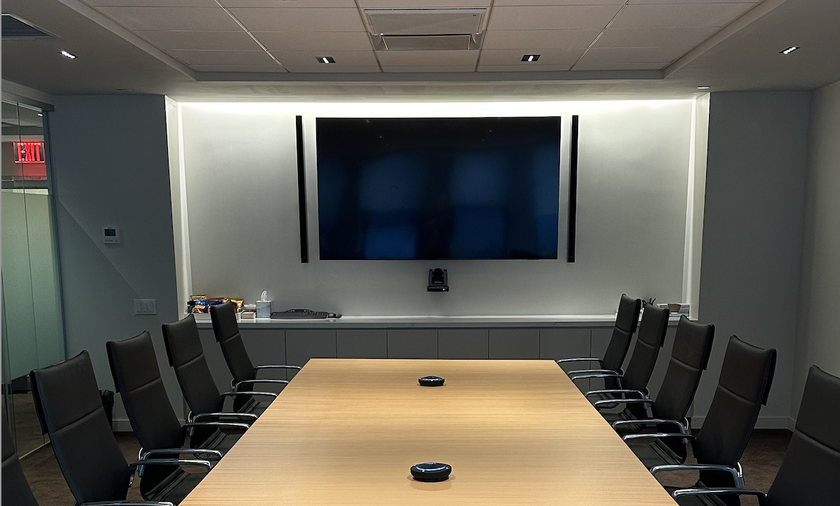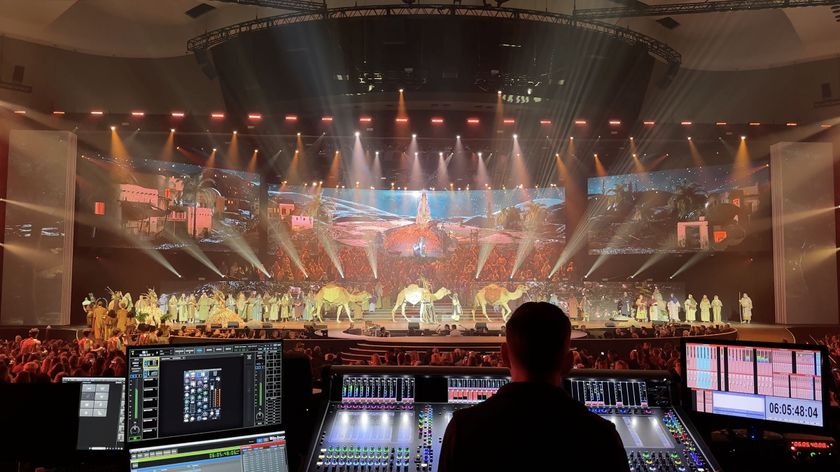Digital Projection’s single-chip DLP E-Vision 1080p 8000 delivers 8,000 lumens of color-accurate imagery to the Revolution Church congregation.With flat panel displays taking over the smaller to midscale presentation market, manufacturers are concentrating their technologies on those applications that require larger displays and more flexible imaging. For systems integrators, this means that facilities such as corporate meeting rooms don’t hold the same margin potential they once did, requiring pursuit of projects where large flat panels are cost prohibitive, and projection still remains the most effective solution.
“Projectors are one of several different options for display devices, and we have to find the niches where they have their best chance to really shine,” said Chuck Westfall, advisor of technical information at the professional engineering and solutions division of Canon USA. One of the areas that his organization has pursued is the medical market, particularly in the area of medical education, where teaching facilities are using the manufacturer’s projectors equipped with DI COM simulation mode. “The DI COM projector is something that has extended capability for tonal gradation, especially on grayscale, so when you’re looking at an MRI or an X-ray image on screen with the projector, it’s a much more accurate way of being able to see the image,” he explained. He added that these projectors are less expensive than full-fledged DI COM projectors with which final diagnoses are made, making them more cost effective in educational applications.
Higher education, in general, also continues to offer growth potential, as do houses of worship, and a recent increase in corporate events has boosted business in the rental and staging market. Mike Garrido, senior product manager at Christie, noted that large projection is also becoming a standard in broadcasting, especially on news programs. “It’s no longer just a talking head—there are more things happening on the screen just because of the amount of real estate that’s available,” he said. The same applies to live entertainment, he adds. “The bar continues to be raised to impress people.”

Audio Video Resources installed two Christie Roadster HD14K-J 3-chip DLP projectors light up two 19-foot-5-inch by 11-foot wide-format screen in the 2,500-seat sanctuary and worship center of the Tucson, AZ-based Casas Church.What’s encouraging for integrators and their customers is that as the bar rises—along with the capabilities of the technology—costs continue to go down. “The pricing has eroded over the past several years, making higher performance, higher resolution, and higher lumens products much more affordable, especially at a time when budgets are tight and budgets are being reduced,” said Scott Wellington, senior product marketing manager for projectors at Panasonic. “It has become much more affordable for end users to work with integrators and spec many more sophisticated products at better prices as opposed to years ago.” He adds that technologies such as shortthrow projectors are becoming a standard for facilities that need to project large images in limited spaces, such as retail environments and training rooms.
For Michael Bridwell, director of marketing at Digital Projection, one of the most important developments the projector market has seen is improved lamp efficiency. He noted that Digital Projection has seen significant success with Ultra High Performance (UHP) lamps in particular. “They have brought efficiency, even to the high-lumen projectors, that end users immediately benefit from,” he said. It has also translated into end users incorporating more projection into their facilities: it’s standard in many houses of worship, for example, to be outfitted with one main large screen flanked by two smaller displays, allowing worshippers in the entire facility a clear view of what’s taking place on the platform.
Bridwell also noted that as warp and edgeblending technology has become ubiquitous with large-scale displays, it has allowed producers and presenters more freedom in how they project their images. “You can double-stack something to ensure that you have plenty of brightness on a massive screen in an auditorium, conference center, or presentation facility,” he said. “Then you can fight the ambient light: you can have the lights on so that people can be taking notes and doing things productively at their seats during the presentation and not sacrifice the image quality.” He added that this technology has also driven more daring presenters to utilize unorthodox screen configurations and surfaces, such as floors, ceilings, and even curved, horizontal screens where images can be projected, in a sense, on the round.
While manufacturers will continue to improve upon their existing technologies and develop new ones, systems integrators face the challenge of going after projects where projectors, indeed, are the better options for their clients. “In large part, what that really means is getting beyond the corporate environment and into larger venues,” Westfall said. In larger venues, then it’s not just about the projector—it’s about the entire installation. “That’s where integrators have the greatest chance to make their profit because they are going to be able to charge for their labor as well as the hardware.”
Carolyn Heinze is a freelance writer/ editor.
Looking Beyond the Specs
While cost of ownership, reliability, and efficiency all play a role in specifying projection, it all starts with knowing what your customer wants, said Mike Garrido, senior product manager at Christie. “You need to really understand and know your customer’s expectations,” he said. “The choice of projectors that we offer is huge, and by understanding your customer’s needs, you can make the right decision for their environment.”
Garrido also urges integrators to, when possible, take the time to educate their clients on the options that are out there. “If at all possible, do a side-by-side to demonstrate DLP and LCD, Xenon, and Mercury, so they can see what the differences are. Once you start educating your client, they will be appreciative of that education and more likely consider you for the job.”
—C.H.










